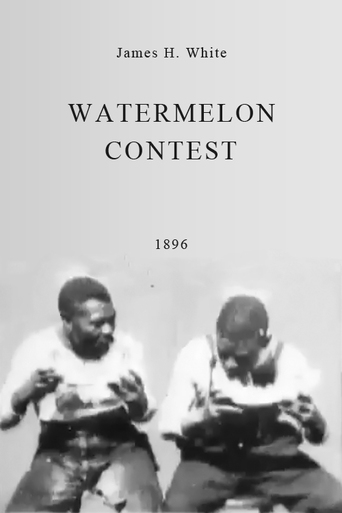

Perfectly adorable
... View MoreIt's a mild crowd pleaser for people who are exhausted by blockbusters.
... View MoreThe film makes a home in your brain and the only cure is to see it again.
... View MoreGood films always raise compelling questions, whether the format is fiction or documentary fact.
... View MoreAlthough the films clearly belong to a racist context that is characteristically US, the sad truth is that White (himself a Canadian) was here simply remaking for Edison a series of films made a few months earlier by the Scotsman W. L. K. Dickson (formerly of course an Edison employee) for Mutoscope with G. W. Bitzer, no less, at the camera. Bitzer would go on to shoot even ghastlier racist films (Human Apes from the Orient 1905 is probably his all-time low) before even working on that masterwork of racist cinema, The Birth of a Nation. That must have been a real treat for him! Dickson and Bitzer shot three rather unpleasantly racist films in Manhattan in September 1896 - Dancing Darkies, A Hard Wash (you can't get a pickaninny white however hard you wash it - advertised as particularly enjoyable watching for children)and A Watermelon Feast.White and Heise at Edison's simply reshot the two more novel ones in October - retitled Watermelon (Eating) Contest and A Morning Bath Happily for the reputation of Dickson and Bitzer it is the White/Heise versions that survive. There is no question of their popularity. Signumd Lubin also made a version of Watermelon Contest in 1897. White remade it as Watermelon Eating Contest (with four contestants rather than two) in 1900 Sigmund Lubin also remade Morning Bath as New Morning Bath that same year, while Selig remade Watermelon Contest in 1903.Things were only a little better by then at Edison's under Edwin Porter and Wallace McCutcheon who produced The Watermelon Patch in 1905 (caricature but, this time, a shade more human, a good deal more humorous and even arguably somewhat at second degree - poking fun at the stereotype as well as the stereotyped).
... View MoreThis is basically all that happens in this 18-second short film from almost 120 years ago. The director is silent film pioneer James H. White. Apparently, he found this subject far more interesting than I did as he made another film like this (only with 4 men) eating melons 4 years later. But back to this one: In here, the two men talk while they are enjoying the delicious meal. I have to say if this film has any impact or lasting impression, then it is probably that you would like to eat a juicy red melon as well. So you see the only color I mention here is red. Who cares about the men being black. It's about equality, so the color does not matter. Is it racist if two white men eat crackers? It's just two men having a meal and seemingly enjoying the very delicious taste. People need to stop being so over-the-top politically correct. Apart from that, it's still not a good movie as it's simply not really interesting. The version with four men I mentioned earlier is more fun to watch I guess.
... View MoreThis simple movie relies completely on a racial stereotype that today would be considered in very bad taste, at the least. Moreover, the footage contains little of interest in itself. Yet it was quite popular in its time, so much so that the original negatives wore out, and in 1900 a movie with very similar footage (also called "Watermelon Contest") was filmed so that audiences could continue to see it. The success of a movie like this is rather a caution, in its illustration that short-term popularity can blind audiences to stereotypes and other such problems.There is not much to this, just a scene of two African-American men competing with each other, as described by the title. It seems mystifying, at least now, why anyone would ever have found it particularly entertaining. Certainly, there was no intention on the part of the film-makers to be mean-spirited or harmful; they were simply oblivious to the message that it could contain. But for that reason, it provides a useful caution as to how differently a later generation might view something commonly condoned or accepted at present.There were quite a few features in the early years of cinema that resembled this one, and it is easy to confuse them with one another. This is one of at least three such surviving features made by the Edison Company. On Kino's recent collection of Edison features, there is some good commentary by Michele Wallace (it accompanies the longer 1905 feature "Watermelon Patch") in which she explains the origins of this and similar stereotypes, and indicates some of the lessons involved.
... View MoreIt is in black and white. Short. About 13 seconds.Four black men participate in a watermelon contest---I guess there trying to see who'll win. This short film is disturbing. It's how they eat the damn fruit. Especially the man in front (who irritates me more than the rest) is chewing on his watermelon so savagely and lustfully you'd think there was no tomorow. The black man in the far right corner is laughing and smiling. The dipiction that African Americans love watermelon and that people are laughing about it--is just.... real disturbing! Also, I want to know why the hell these men offered to do it? Why they wanted to be ridiculed? For the money? That's sad. But that's what it was like back then.What really bugs me is that this short clip was intended to be a comedy----to be fun. But like I said, that's what it was like back then in the 19th century and that's the way it always was.
... View More